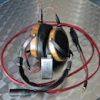
So much has changed since we ran our three streaming and download primers in 2012 — see this and this — and 2014. That we have changed our listening habits is reflected in a 2018 study, commissioned by classical streaming service Idagio, which shows that at least a third of classical music lovers now listen to music via audio streaming services or YouTube. Other studies demonstrate that the majority of listeners choose smartphones as their preferred streaming device. Whether you listen to music in the background or give it your undivided attention, this simple guide will help you derive better pleasure from streaming sources and downloads without pain.
Choosing your streaming service
While many listeners prefer YouTube for its free basic service and visuals, a subscription to YouTube music is necessary to enjoy uninterrupted playback. Even then, YouTube, as well as Spotify and Apple Music, only stream music in AAC format, a glorified form of mp3 whose quality is demonstrably inferior to CD.
The alternative is to choose one or more of the five streaming services currently available to U.S. music lovers that offer music in full CD quality (16-bit/44.1kHz or 48kHz sampling rate) or high resolution (e.g. 24-bit/96kHz). Three of them—Tidal, Qobuz, and Amazon Music HD — offer music of all genres, while Primephonic and Idagio are classical-only services. Primephonic offers both CD quality and hi-resolution, depending on the source material, while Idagio, at this time, doggedly sticks to CD quality but has some great features that make for easy comparison between recordings.
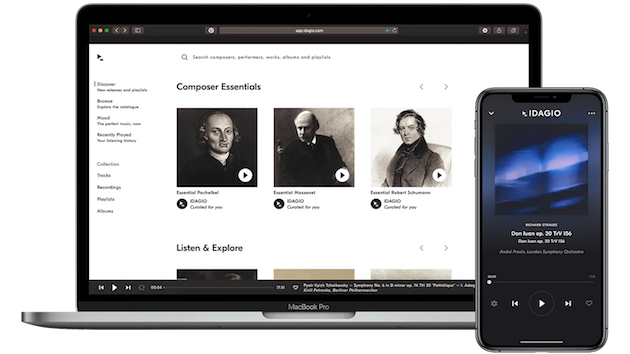
All of these services save for Primephonic offer free apps for computer, phone, and tablet playback. Most also have curated playlists, exclusive content, and interviews. Classical lovers will learn a lot from Primephonic and Idagio’s weekly mailings. Try not to get confused by Amazon Music HD’s buck-the-industry decision to muddy the waters by labeling as “HD” music that is CD quality. As one of our dogs is prone to say, “Grrrrrrr……”
Costs vary for monthly and annual subscriptions. Qobuz, for example, markets “you own it” downloads, often at bargain prices. Ultimately, however, it’s the content, which you can investigate to your heart’s content during the free trial period you’ll find on each service’s webpage, that may ultimately determine your choice(s). Yours truly, for example, was recently delighted to discover that Marston Records’ invaluable, top-quality transfer of all of soprano Lotte Lehmann’s prime electrical recordings can be streamed in full CD quality on Qobuz.
Resolution and Format: A Basic Primer
The reason for high-resolution audio is simple: Hi-rez gets you closer to what artists and sound engineers created and hoped you would hear. If the format is lossy, it is deleting essential information from the master file in order to compress the file’s size. The same thing can happen when you send photos over the web.
Anyone who tells you that the two lossy formats — midrange-deficient, harsh, and monochromatic-sounding mp3 or the somewhat better AAC — are all you need, that Apple Music’s somewhat better-sounding “Mastered for iTunes” is as good or better-sounding than CD, or that hi-resolution does not make a difference is either ignorant, hearing impaired, or too mired in theory to listen with an open mind. Just as it doesn’t take a weatherman to tell which way the wind blows, it doesn’t take a trained audiophile with golden ears to hear that hi-rez sounds more like the real thing.
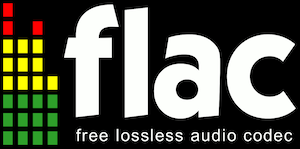
The format in which files and streams are delivered is another matter, and easily addressed. Many streaming and download services give you the choice of mp3, FLAC (“free lossless audio codec”), ALAC (Apple lossless), MQA (“Master Quality Authenticated”), WAV, AIFF (Audio Interchange File Format) or, in some cases, DSD (“Direct Stream Digital”), often in different resolutions. Mp3 may take up the least space, but you permanently sacrifice sound quality. FLAC and its Apple equivalent, ALAC, are compressed lossless formats that take up less space and automatically expand to full quality or high-resolution upon playback. The only hitch is that iTunes still will not play FLAC. We’ll discuss that little bugaboo below.
WAV and Apple’s equivalent, AIFF, are uncompressed lossless formats. Virtually every quality recording and mastering studio chooses WAV. Debates rage over whether WAV and AIFF offer sonic improvement over FLAC and ALAC, if for no other reason than they don’t require the extra processor power necessary to decompress them. As a writer for Stereophile, which is perhaps the most respected audiophile publication on the planet, I routinely play and stream hi-rez FLAC, and feel no overwhelming desire to change course. Having said that, a dedicated music server/streamer processes music files much more efficiently, rapidly, and with less noise than a standard multifunction computer.
One sonically and emotionally compelling variant to hi-rez comes in the form of Tidal’s MQA encoding. Simply put, MQA is a process that not only compresses files into smaller packages, as does FLAC, but also compensates for timing errors in the processors used during the recording process. In addition, it’s very easy to stream hi-rez MQA wirelessly over mobile phones, even in areas with weak signal, without dropouts. If you play MQA files through Tidal’s app, you may not hear all of MQA’s benefits, but the app will unfold the files to their original size: in other words a 24/48 MQA file derived from a 24/96 master will automatically unfold to 24/96 when played through the Tidal app.
DSD, the hi-rez format used in hybrid SACDs from labels that include SFS Media, is not currently available from most streaming services. DSD downloads, which have a smoothness and silence all their own, are most easily obtained from NativeDSD.com.
Music lovers wishing to download and own sound files — files that don’t disappear when streaming service subscriptions end, but require backup in case your drive crashes or burns — can find hi-rez of all stripes for download at HDTracks, ProStudioMasters, AcousticSounds, eClassical, NativeDSD, Qobuz, PrestoClassical, Hiresaudio, Hyperion, and other sites. Prices differ. Note that some labels only make downloads available through their own sites. The best site for determining if a recording is available as a hi-rez download is findhdmusic.com: It’s not always accurate and doesn’t list all the sites mentioned above, but it’s a good starter tool.
Better Sound Made Easy
Even if you play music through a CD player, sound quality is determined by the quality of the device’s digital-to-analog converter, aka DAC or D/A converter. In the case of a mobile phone, tablet, or computer, the wholesale cost of that DAC may be 50 cents or, if you’re lucky, $2. And the quality is reflected in the price. Meanwhile, the only smartphone I know of that’s both available in the U.S. and also contains an excellent DAC capable of decoding hi-rez files, MQA, and DSD is from LG: I reviewed the LG V30 some years back for Stereophile, and its successors contain the same DAC.
There are five simple ways to improve the sound quality of any phone, tablet, or computer in your possession.
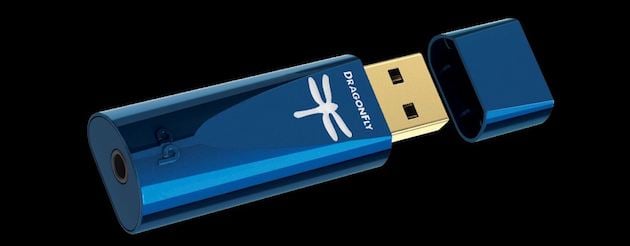
1. Buy an external DAC. For portable devices and computers, the most convenient, best sounding, and affordable one I know of is the AudioQuest Dragonfly Cobalt ($299), with its predecessor, the DragonflyRed ($199) a less expensive runner-up. Both have USB-A terminations to connect to your device; the Cobalt includes AudioQuest’s USB-A to USB-C adapter that does the trick for most smartphones and USB-C-equipped tablets and computers. For iPhones, use Apple’s Lightning to USB-A adapter or an equivalent of better quality (if you can find one). Happily, some iPads have now abandoned Lightning connectors for the more universal USB-C.
The quality of your adapter is an absolute determinant of playback quality. For USB-A to USB-C, I use Nordost’s Frey 2 USB C adapter. Their Valhalla USB 2.0 cable, though expensive, is the best I’ve heard. But you don’t need one if you’re using an AudioQuest Dragonfly.
The other end of the Dragonfly contains a stereo-mini jack compatible with virtually all headphone and earbud connectors. If you listen via computer through desktop speakers, a simple mini-to-RCA adapter will usually suffice. You’ll need to download drivers for Windows and Android devices, but Apple products don’t need them.
Dragonflys are limited to 24/96 data but can handle higher sampling rates via downsampling. That’s not a concern since most download and streaming services stick to 24/96 and offer it as an alternative even when higher rates are available. Is there an audible difference between 24/96 or DSD64 and higher sampling rates? In a word, “Yes!”
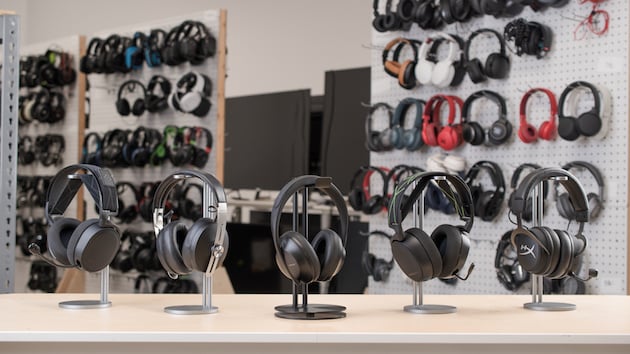
2. Junk the standard earbuds that came with your portable device and get better-sounding earbuds or headphones. The choices are endless, from mass market but decent-sounding Beats on up. While you can certainly opt for Bose, whose advertising saturation is often superior to their product’s sound quality — there is certainly something to be said for noise cancelling devices — you can find alternatives in every conceivable and even inconceivable price range either online or at your local store. Nothing can surpass listening before you buy. Please honor the bricks-and-mortar outlets who provide this service by buying from them, rather than walking out the door and purchasing online.
As with adapters, the quality of headphone cabling determines ultimate sound quality. Nothing can beat comparing their sound on the headphones of your choice.
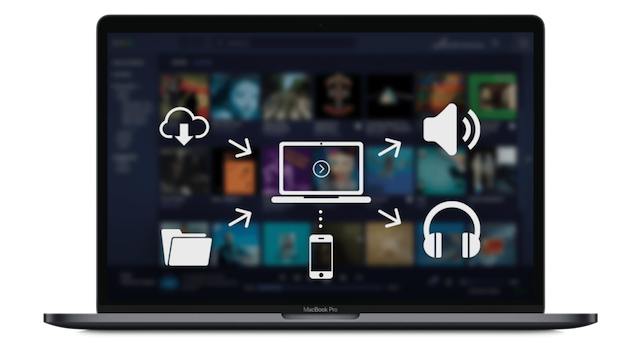
3. Upgrade your file and streaming playback software from iTunes to one of the many vastly superior products available. The lowest-priced and most adaptable software I’ve used is Audirvana, which handles every format described above and more. I personally use and prefer the sound of Roon, an equally adaptable product that boasts exceptional metadata. Both softwares have portals for Tidal and Qobuz, and can conduct simultaneous searches of your own files, Tidal, and Qobuz.
Some people prefer the sound of JRiver, but its distinct lack of versatility and poor search engine make it a nonstarter in my book. Of course, if you only want to stream classical and subscribe to either Primephonic or Idagio, you’ll most likely use their apps and browsers.
4. Get self-powered extension speakers for your computer, laptop, phone or tablet. Choices and sound quality differ wildly. Connector cabling makes a difference. The choices are vast.
5. If you are streaming music via computer or laptop and have a choice between wireless and wired transmission, wired delivers wider bandwidth, which equals better sound. Once again, better ethernet and USB cables make a difference. So does switching out your modem and router’s little wall wart for a linear power supply. But now we’re getting into audiophile territory, which is beyond the scope of this article.
So let’s stop here. Besides, it’s time to enjoy the music. With so much great music available, why not get the greatest possible enrichment from it? Follow my advice and happiness will be your reward.




